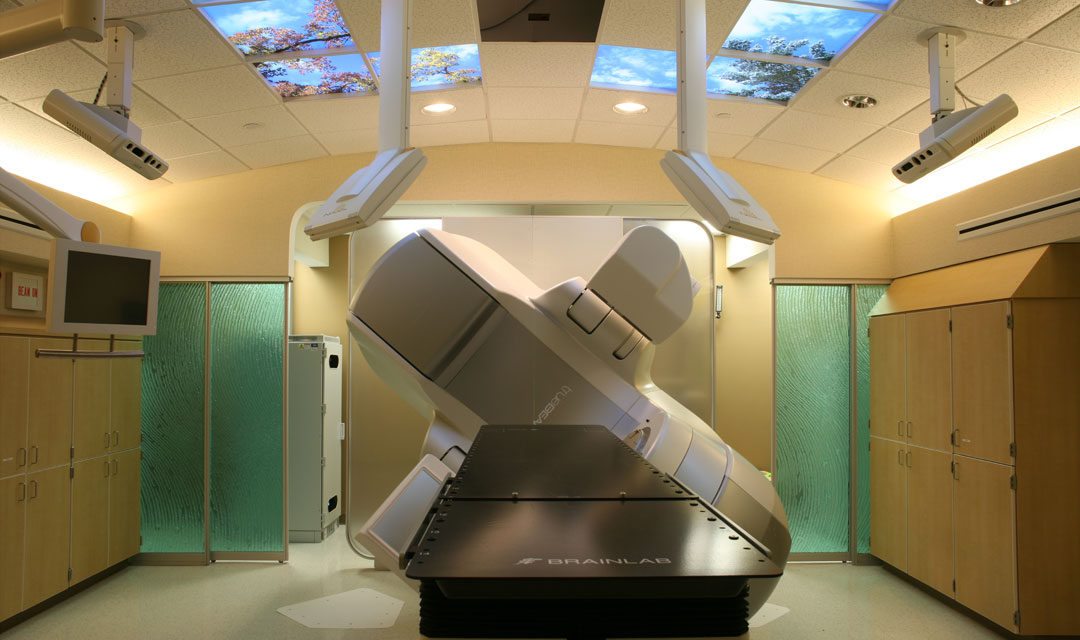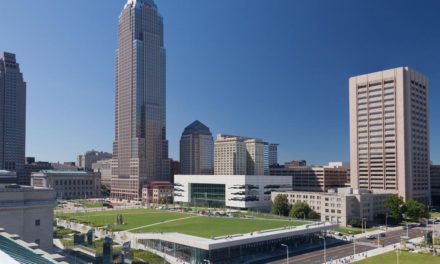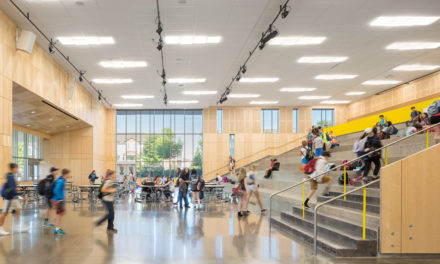The changing landscape of healthcare in the U.S. is requiring hospital systems to develop and adopt new types of facilities and to reconsider both where and how they provide their services. This shift is inevitably leading to new opportunities for architects and interior designers as healthcare systems aim to differentiate themselves in a more competitive healthcare market.
The Evolution
I remember my grandparents talking about having to travel for medical care. They would typically drive over an hour to get to the large academic hospital campus. It was something they dressed up for and even looked forward to as it was a major, full-day event. My grandparents believed that by leaving their small community to visit doctors at a giant institution, they were receiving the best possible medical care.
Conversely, today’s consumers expect medical care to be convenient and fast to conform to their modern, busy lifestyles. Healthcare is now being delivered closer to home or even at home with advances in telemedicine. Patients expect a personalized experience with continuity of care and the ability to visit multiple doctors while instantly sharing their medical records and history.
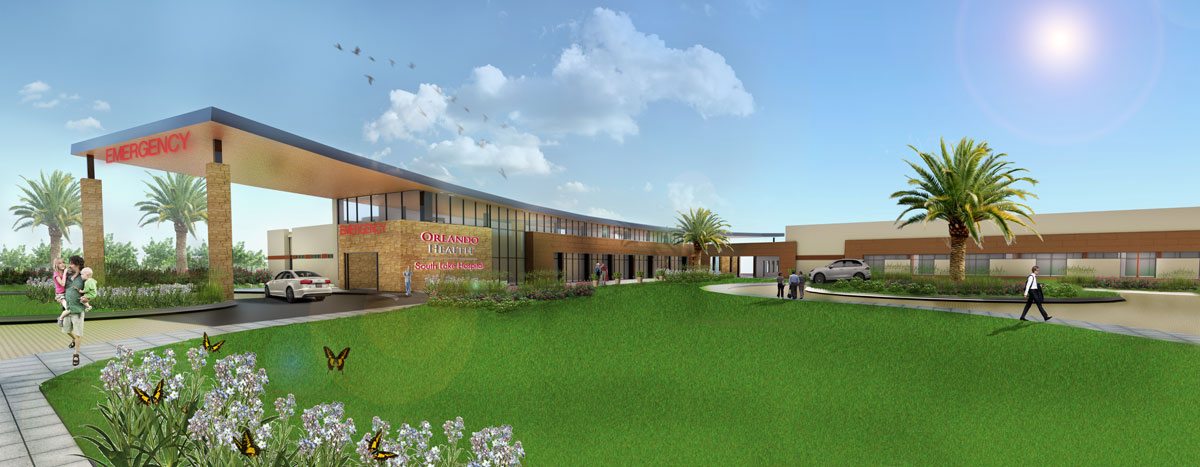
South Lake Hospital Emergency Department. This detached emergency department is an example of a smaller scale hospital facility placed in a local community. Courtesy of Little.
As a result of modern consumer expectations, hospitals are decentralizing their services from a traditional, all-encompassing medical campus to localized outpatient centers that bring patient care closer to where people live and work. This includes an increased interest in providing hospital-based services in outpatient centers – services such as, emergency departments, radiology, infusion centers, cancer care surgery and observation units. These facilities allow the hospital to expand their market reach with a much smaller investment and a faster speed to market than traditional hospital construction allows.
The design of these smaller scale hospital facilities must reflect the local community in which they are located as well as the larger healthcare system they belong to. The focus of these community-based facilities is to build brand loyalty with consumers in an effort to retain them as patients throughout their lifetime of healthcare needs, eventually serving them in their larger facilities and hospitals.
Today’s Healthcare Design
Healthcare providers, though many operate altruistically, must be able to attract patients and be compensated for their services to remain open. As competition for healthcare increases, the provider’s brand to the customer becomes increasingly more important. Traditional hospital marketing and branding practices is no longer enough in the new digital information age. To compete, it is essential that hospitals think much more holistically about their brand as it relates to the patient experience.
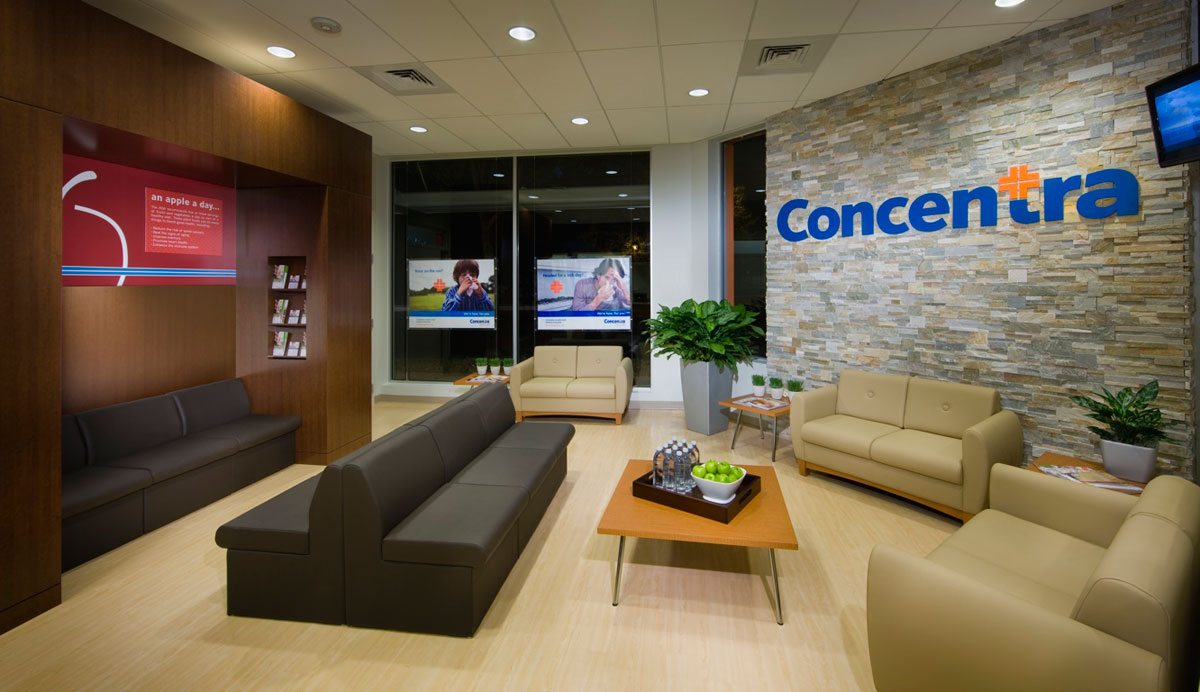
Concentra Urgent Care. This facility exemplifies a comfortable environment aiding in patient relaxation. Courtesy of Little.
Quality healthcare is no longer a luxury, but the baseline expectation for all consumers. Increased choice in medical service will continue to force changes and improvements in the patient care model, which now serves as one of the few differentiators between facilities. Outpatient medical centers not only operate as a miniature version of a clinical platform, but as a new model based upon user experience. Patients expect to have signature moments and exceptional service before and after their visit. Designing spaces with empathy for the patient is of vital importance in this modern medical marketplace.
With hospital funding now tied to patient satisfaction surveys (HCAHPS Star Ratings), patient experience is a main focus for both hospital administrators and designers. Combine this with a physician shortage, aging nurses and tightening reimbursement, healthcare facilities designed today are required to balance the expectations of anxiety-ridden patients, nervous family members and tired staff, while creating a positive experience for all three user groups.
Design trends aimed at implementing this differentiation include increased use of natural light and a connection to nature. The newest medical facilities feature healing gardens and areas of retreat and respite. The innate importance of human connection to the outdoors, coined biophilia, is proven to decrease blood pressure and help decrease anxiety levels. Facilities with these areas allow patients, family, and even staff to relax and center themselves during times of high stress.
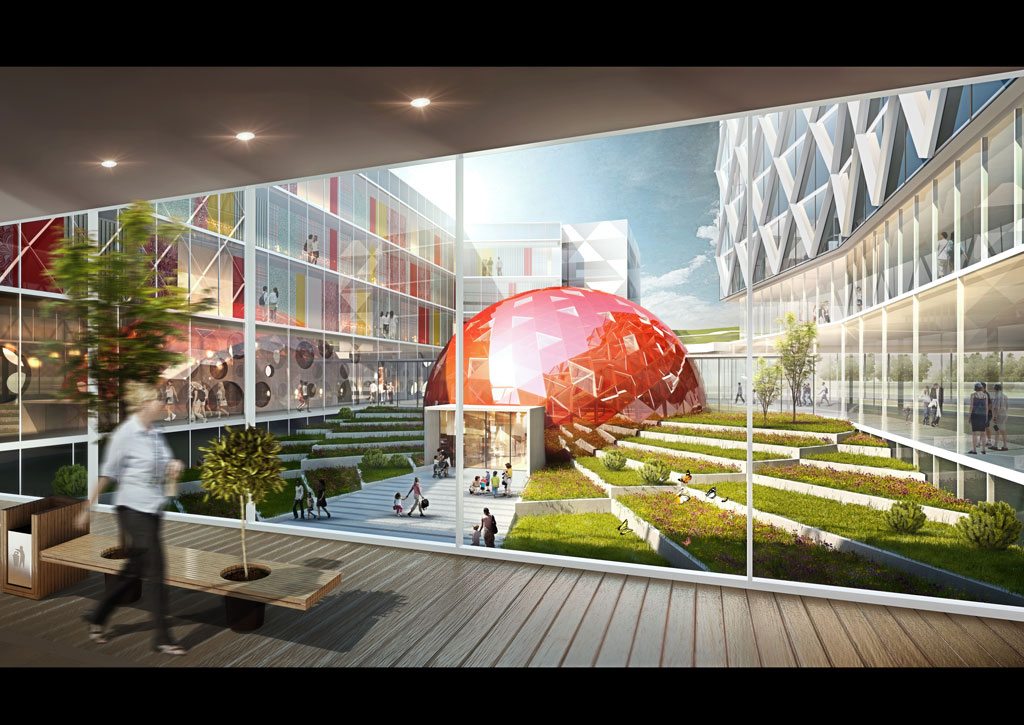
Yantai Women’s & Children’s Hospital Competition. A design competition recently won by Little was sponsored by the Fushan District Planning Department in China. This design allows natural daylight to fill the space and provides a courtyard as an area of retreat. Courtesy of Little.
Family-focused care includes better amenities for visitors and increased inclusion of a patient’s family in medical decisions. Patient rooms and exam rooms are now designed to welcome the family and ensure that family members have access to the patient to act as a secondary caregiver and a trusted patient advisor. Family members should be considered important collaborators in the healthcare experience; therefore, having a place for family is important in the layout of patient rooms and departments.
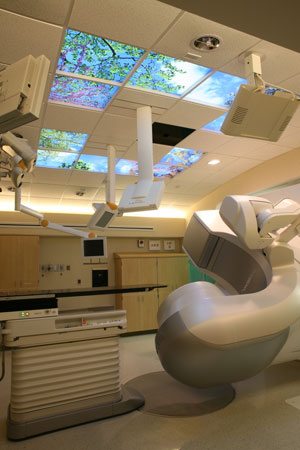
Cone Health Cancer Center. Courtesy of Little.
Today’s patients rely on high-tech medical solutions. They expect diagnostic services to give quick, reliable results. This means facilities are frequently updating and replacing equipment, trying to keep ahead of their competitors’ latest diagnostic technology. At the same time, patients also expect caregivers to provide close interpersonal care and be a partner with them in their recovery. The dichotomy between high-tech cure and high-touch care creates a unique challenge for healthcare designers. Healthcare design teams must focus on the patient expectation of modern medical spaces that are comfortable and relaxing while incorporating the best medical equipment available.
Another differentiator is designing for wellness. Hospitals are stereotypically perceived as unhealthy buildings with an unpleasant combination of bright lights, sick people, noxious smells and toxic cleaning solutions. Buildings designed for wellness utilize materials that limit off-gassing and incorporate natural, anti-microbial properties. New mechanical systems incorporate modern filtration materials to provide increased ventilation rates and improved cleaning procedures to vastly increase air quality. In addition, the installation of customizable lighting control systems allows patients to fine tune overhead lights based on their comfort.
By applying these design principles, new healthcare facilities hope to change patient perceptions, create brand loyalty and ensure each visit to a medical center is a positive experience for both the sick and healthy. With an intentional design focused on the experience, including everything from how visitors move through a facility to thermal comfort, caregivers can focus intently on wellness and preventative care which helps increase the facility’s bottom line.
About the author
Valerie Miller, AIA, ACHA, LEED AP BD+C
Healthcare Studio Principal, Little
With over 13 years of experience, Valerie has worked on a broad range of healthcare projects including hospitals, freestanding emergency departments care centers and pharmacies. She is a Studio Principal for Little’s Healthcare Practice and has a sincere passion for positively impacting the patient experience through outstanding design solutions.
About Little
Little, an international architecture and design firm, is recognized for developing exceptional design solutions that generate business results in the community, workplace, healthcare and retail industries. With over 375 professionals, Little delivers results beyond architecture by combining expertise in traditional architectural services (architecture, engineering, interior architecture) with proficiency in additional diversified architectural consulting services (land development services, facilities planning and space management consulting, graphic design, building technology applications, and computer animation and internet application services).

